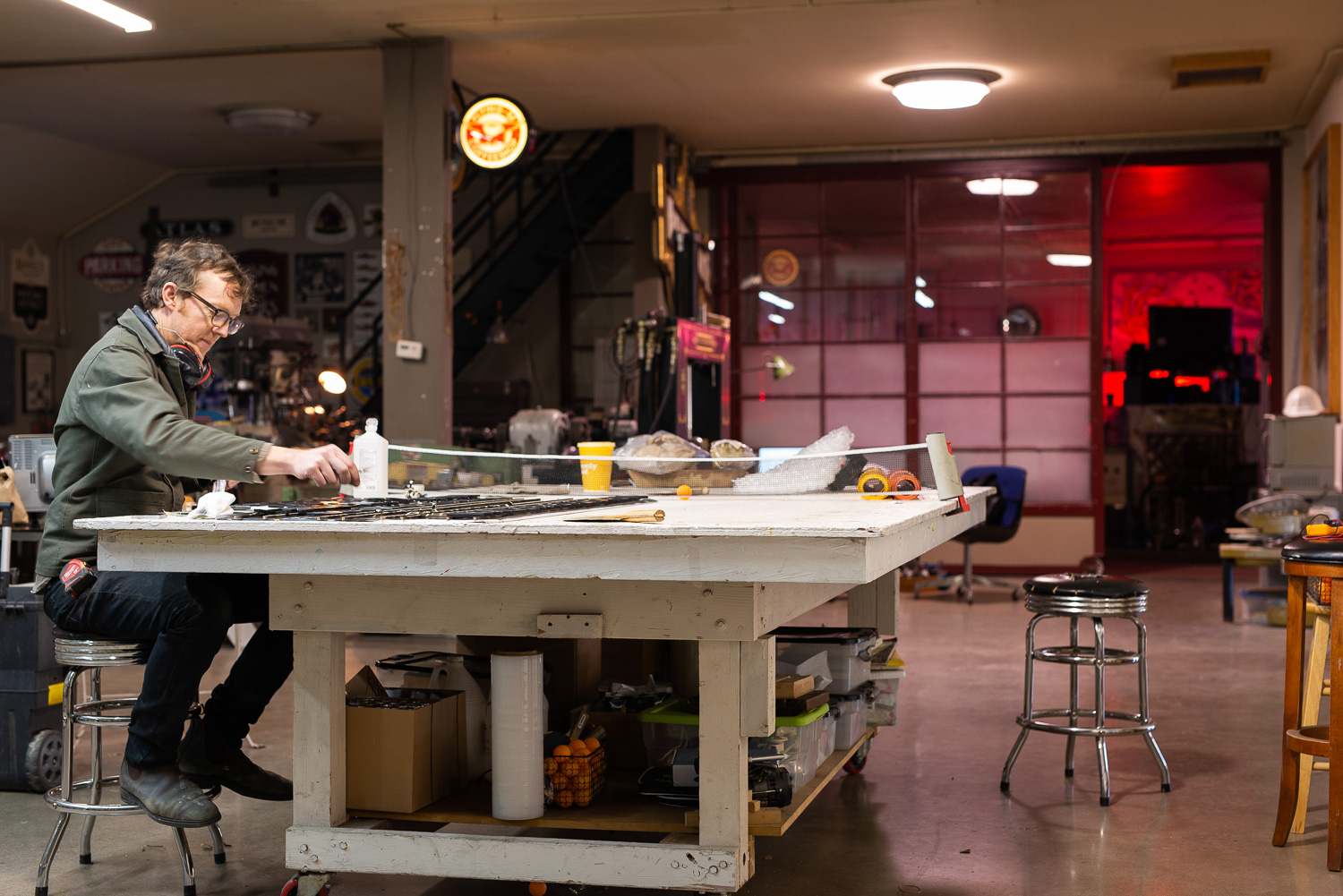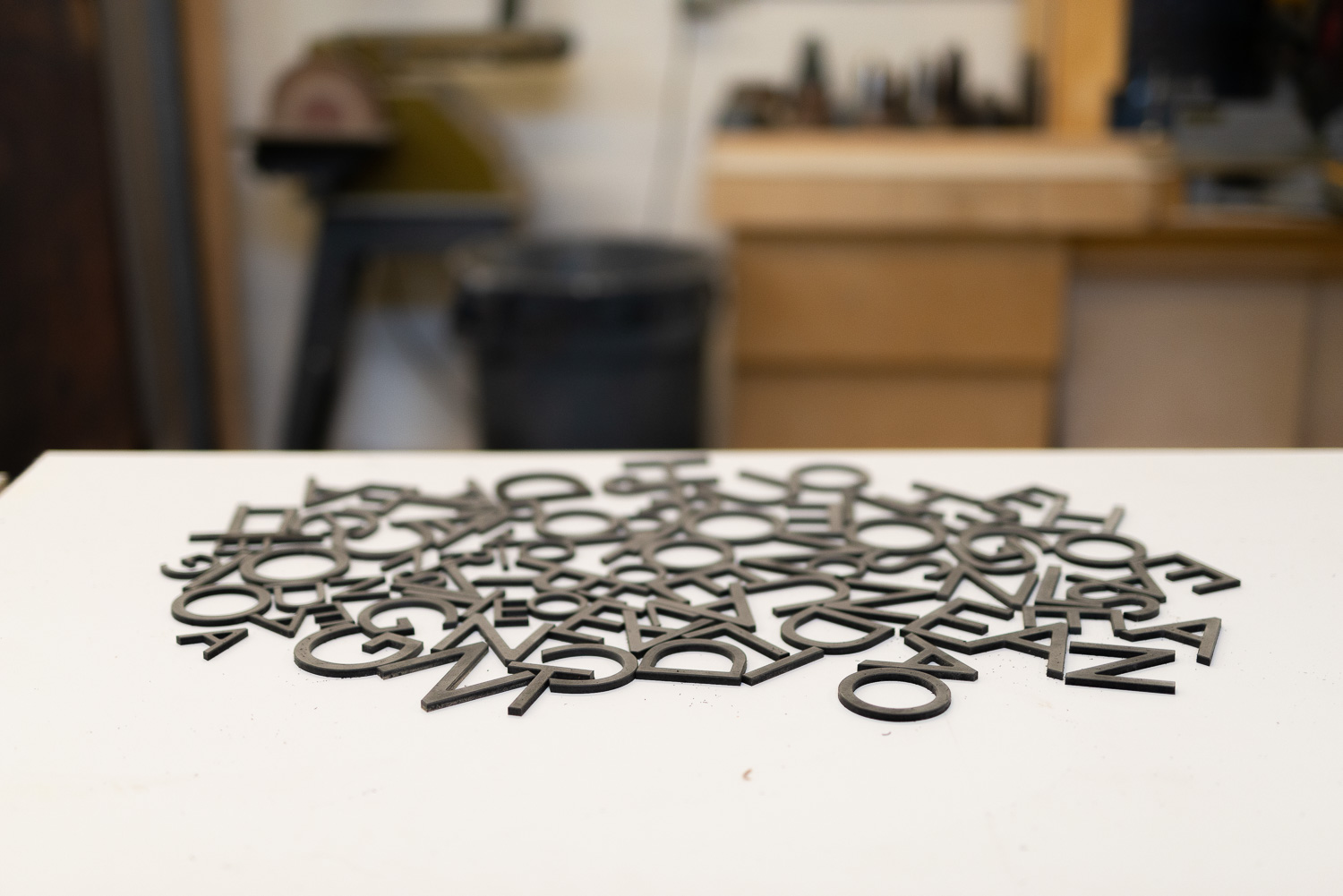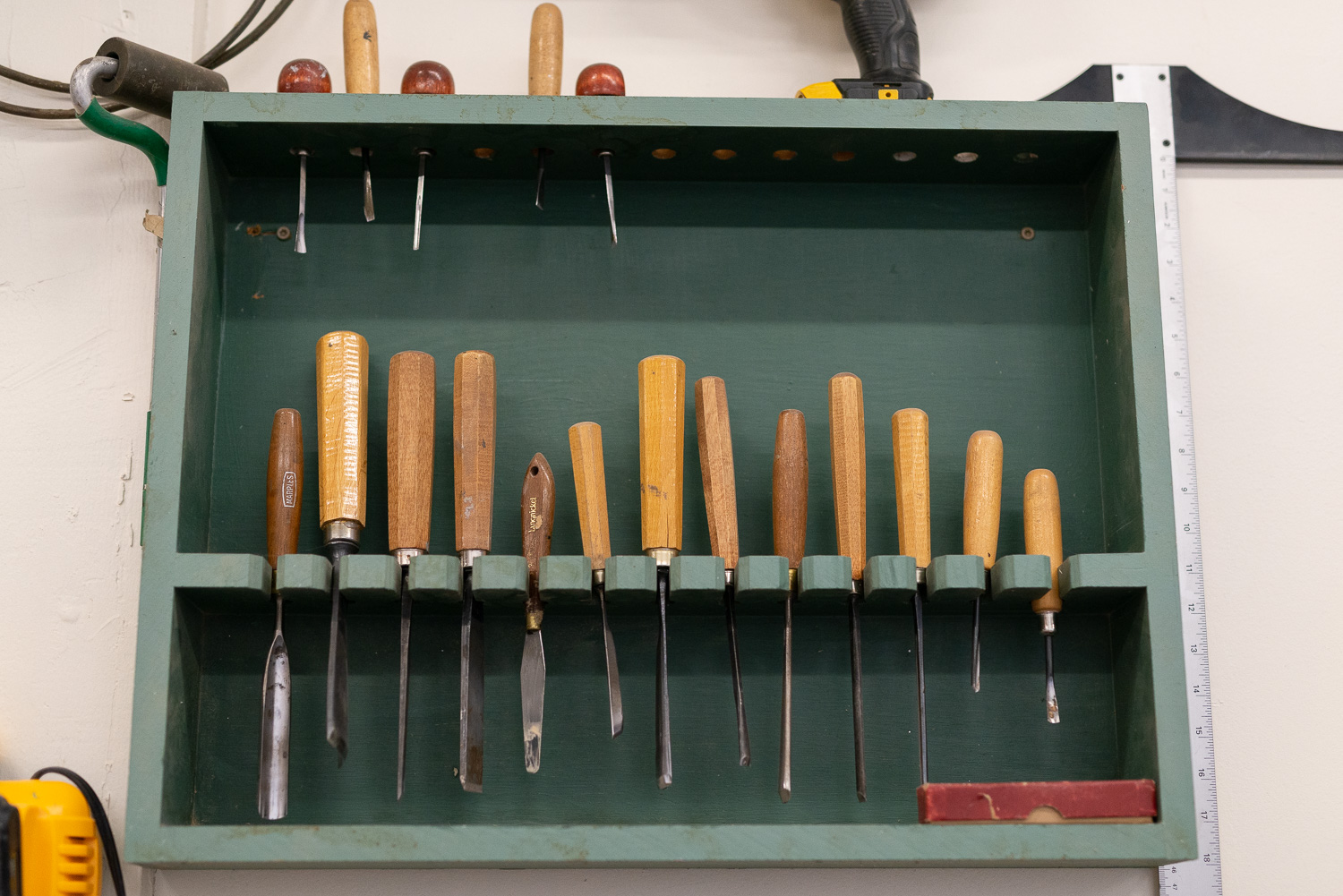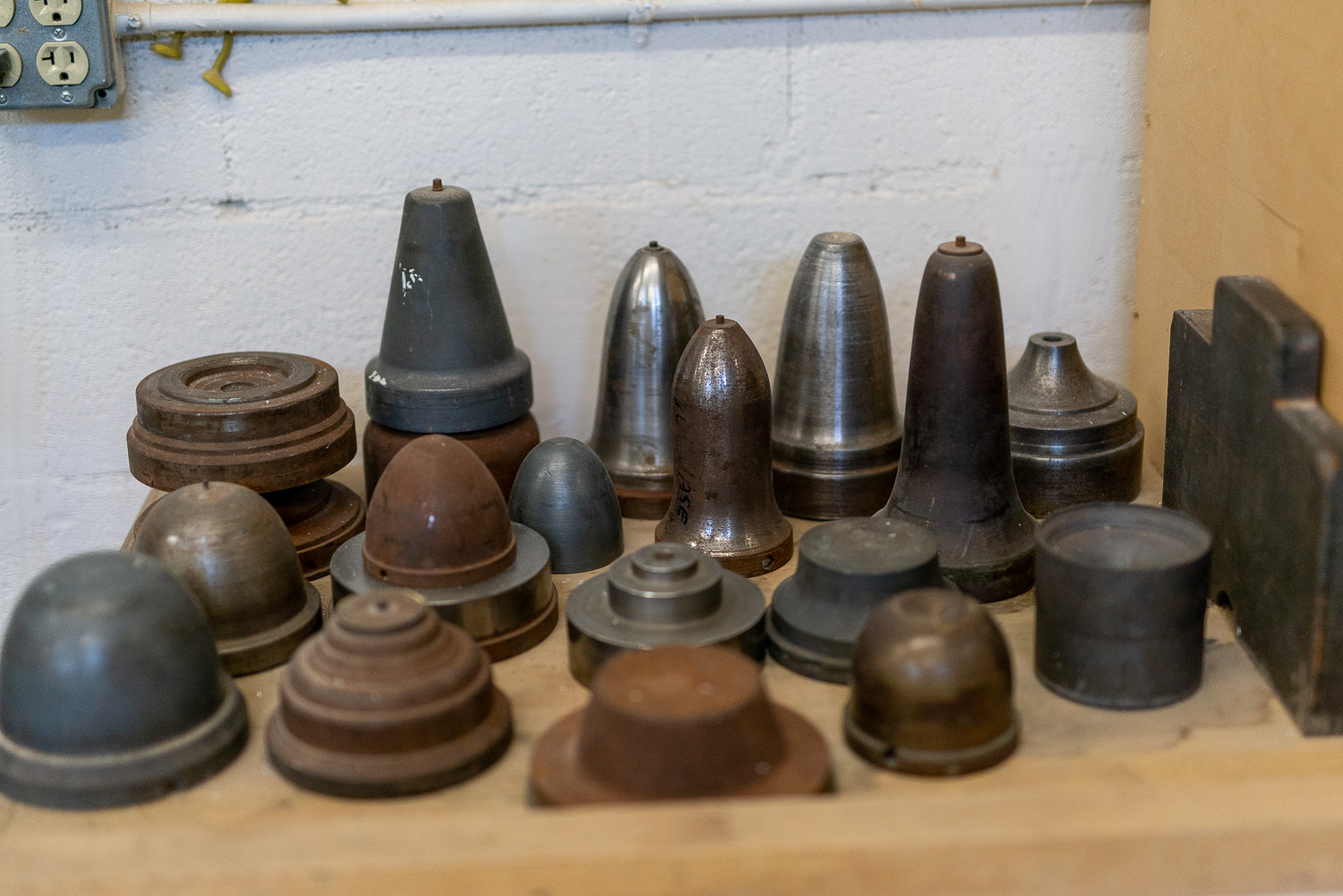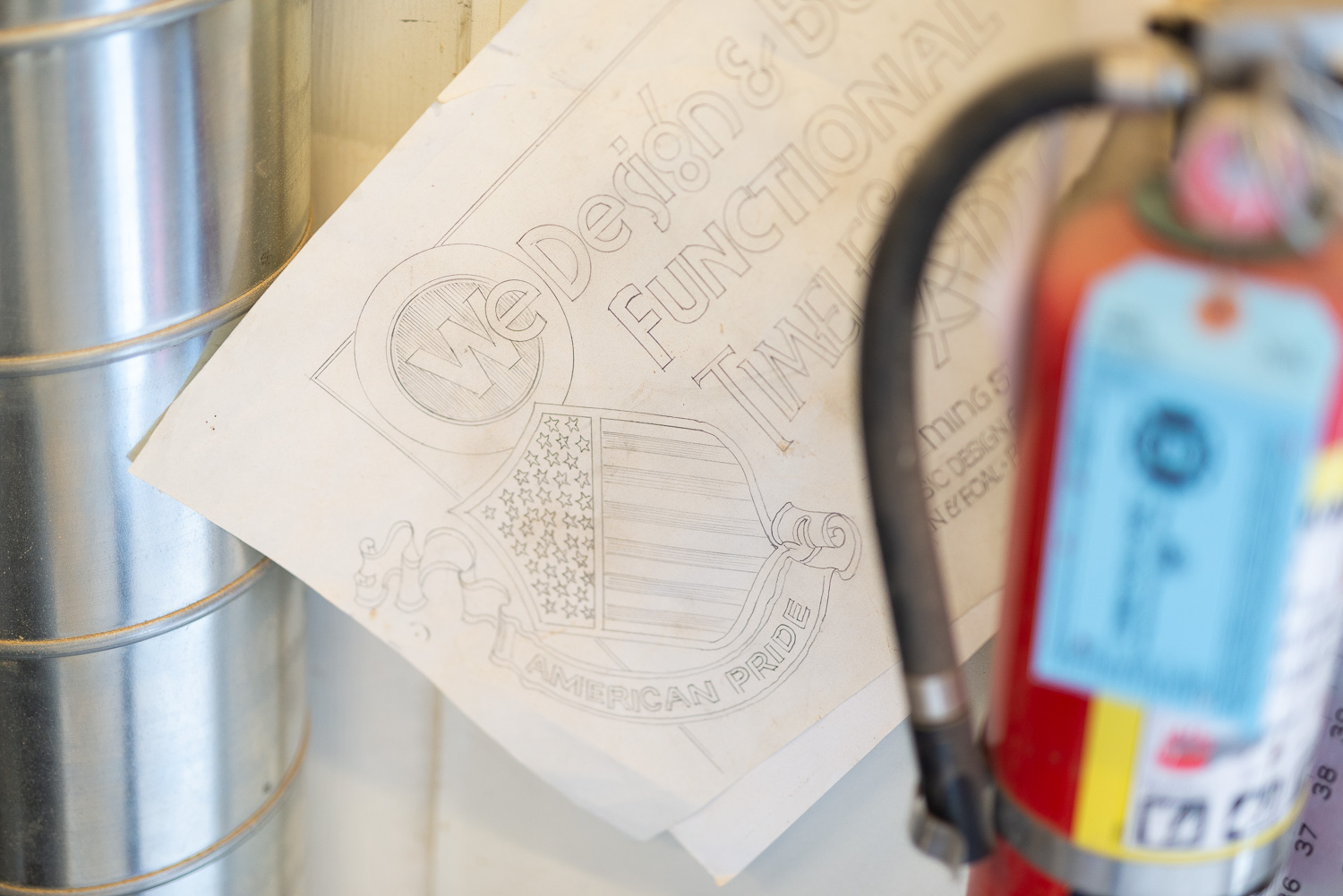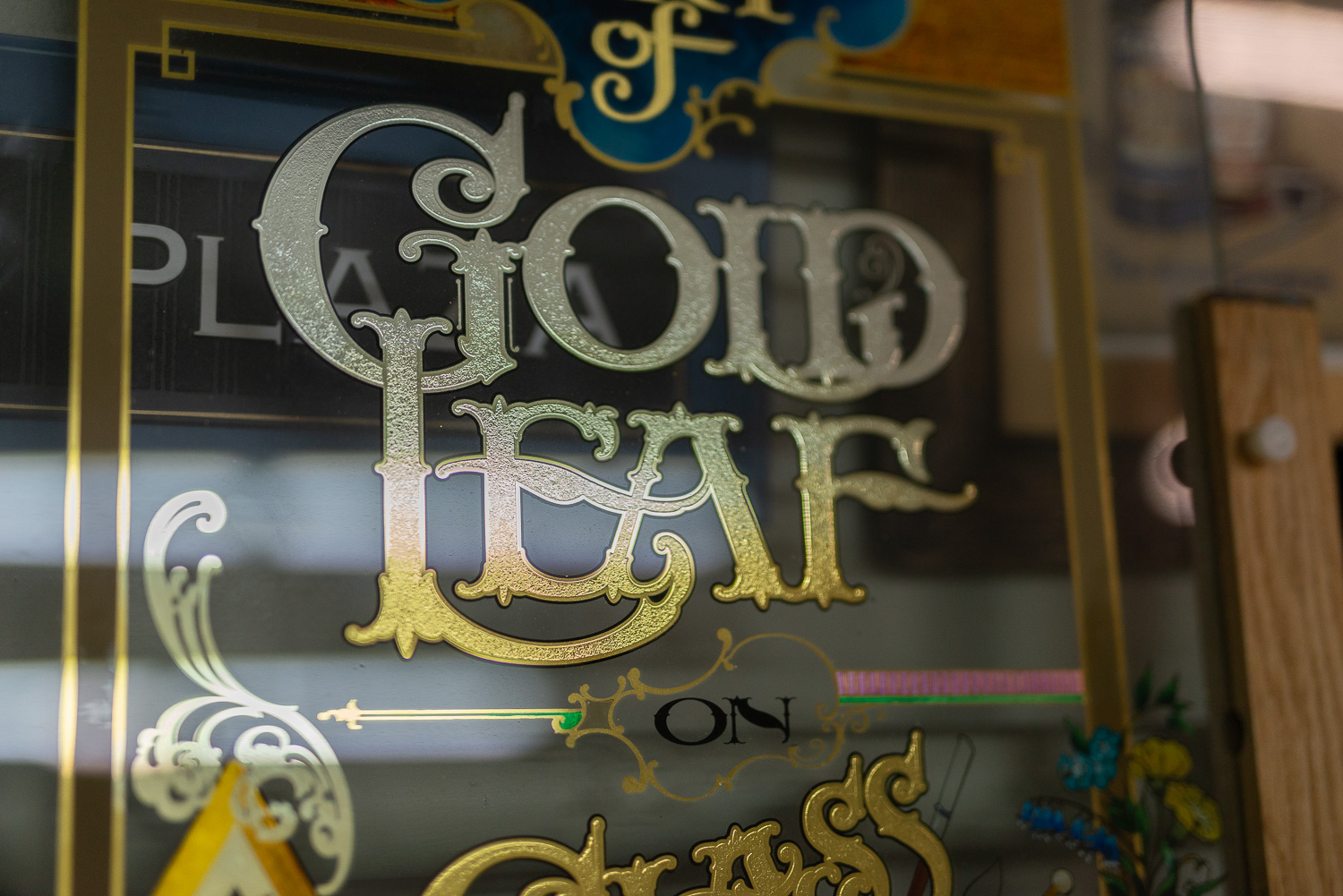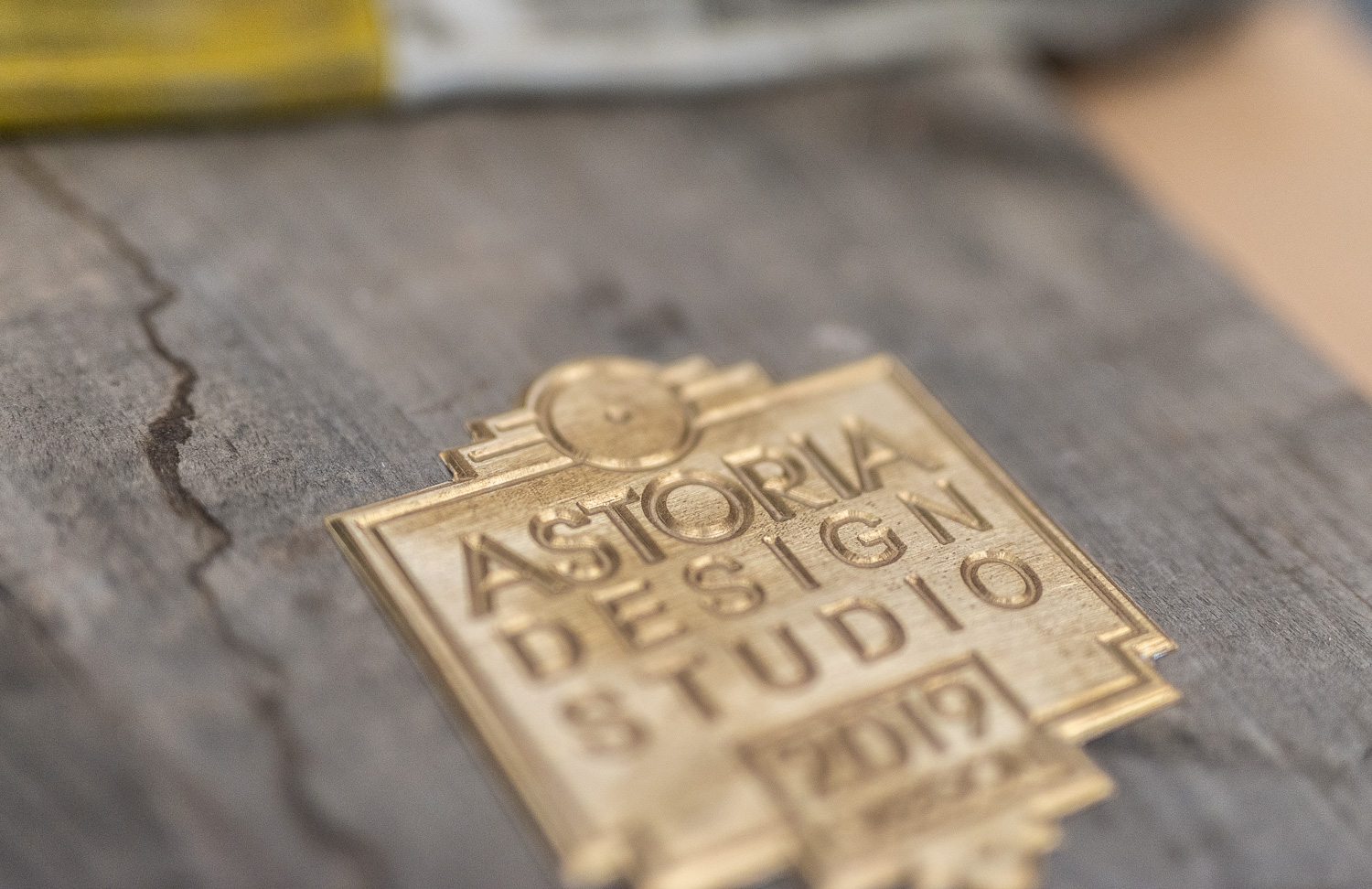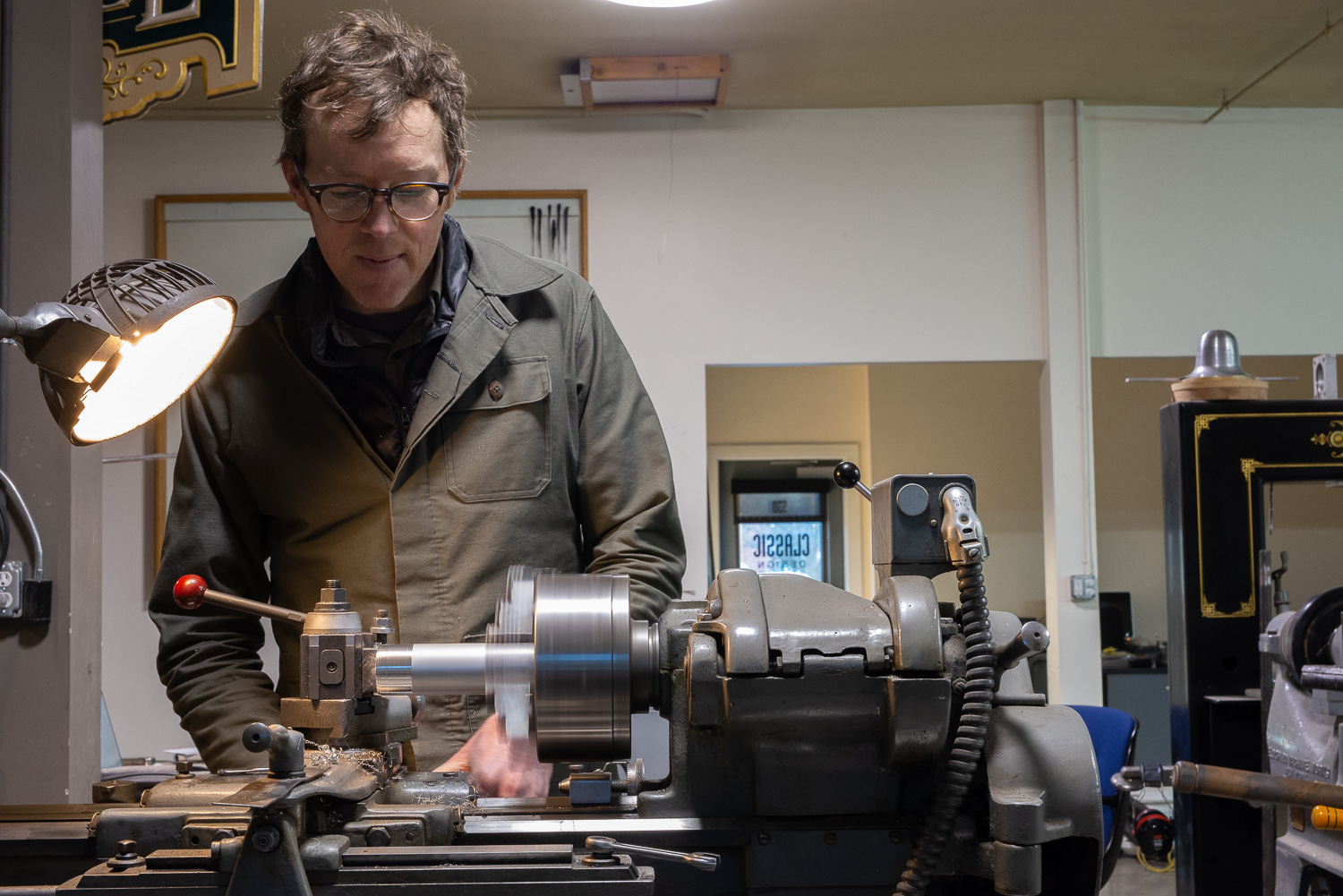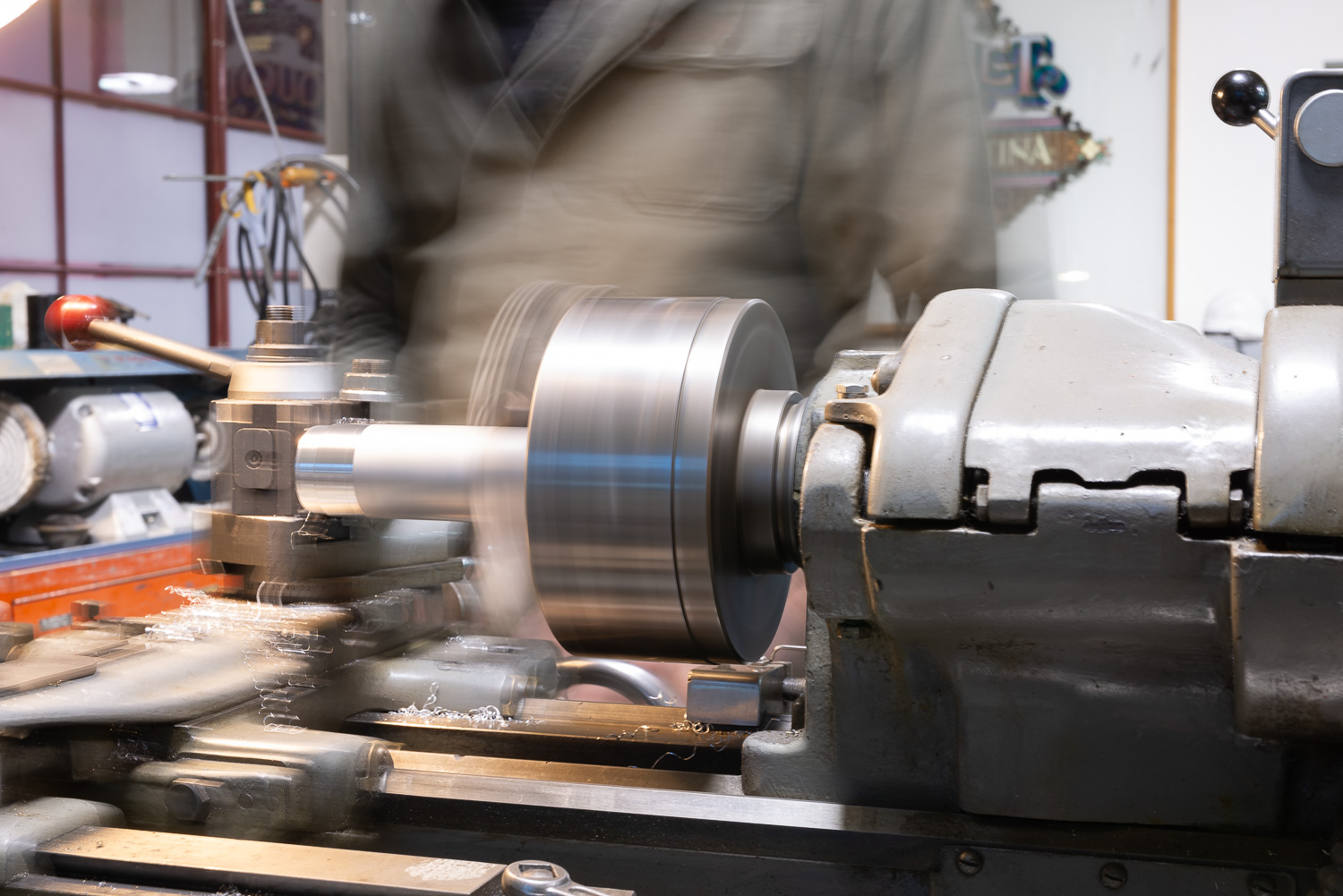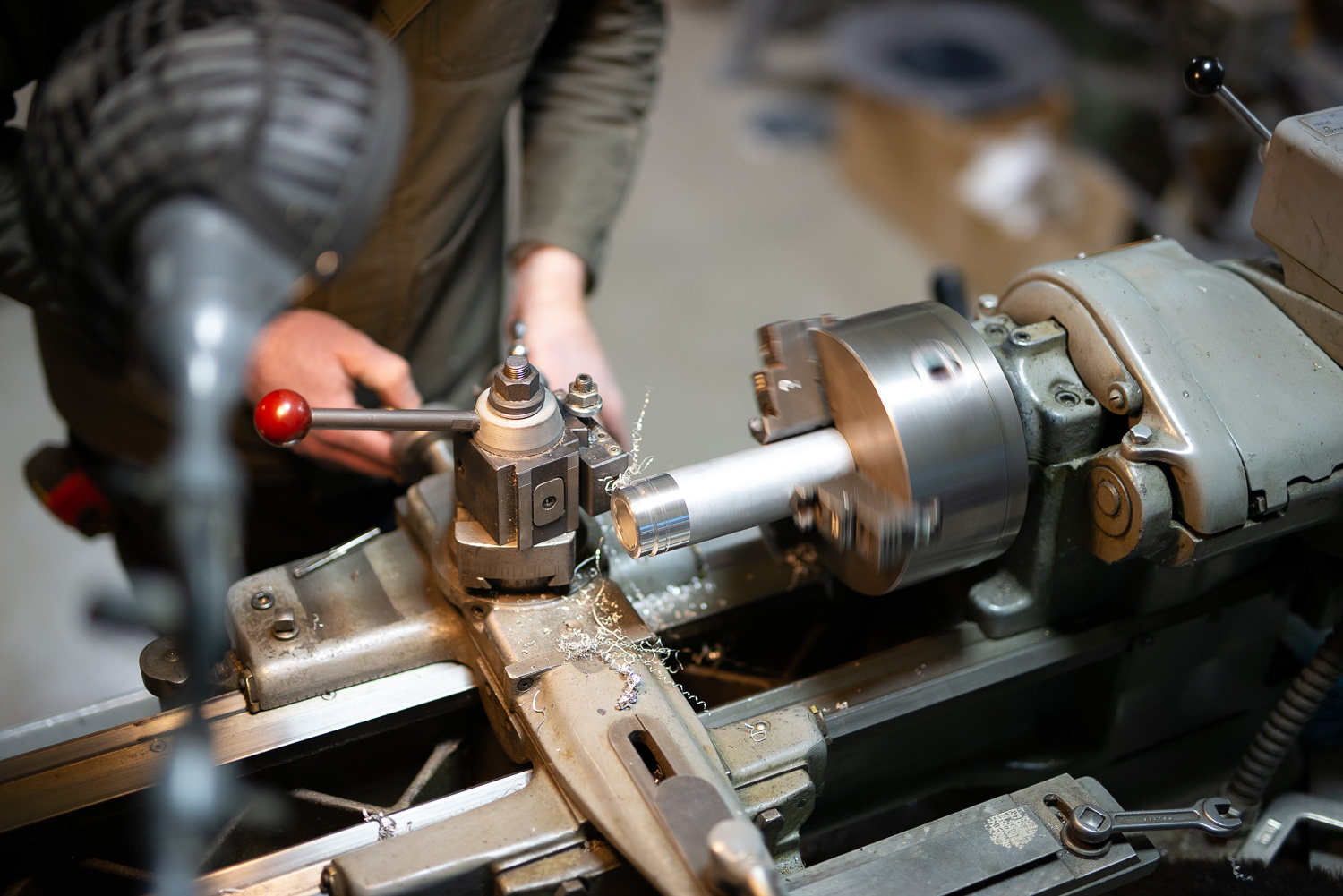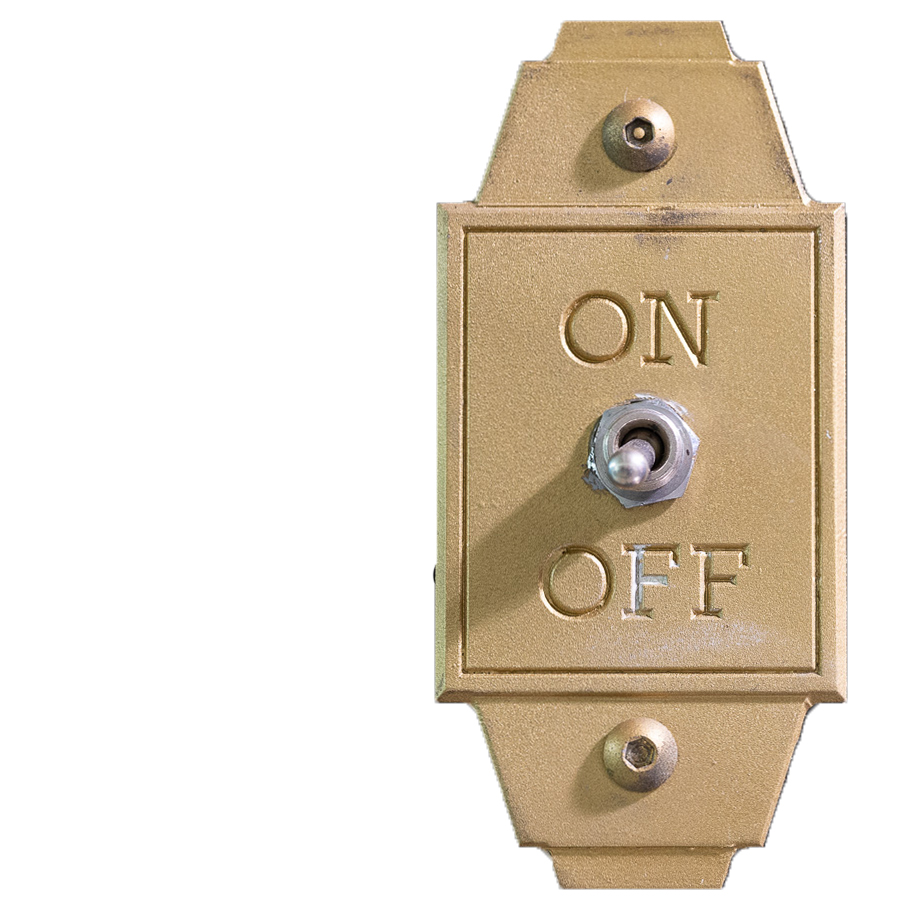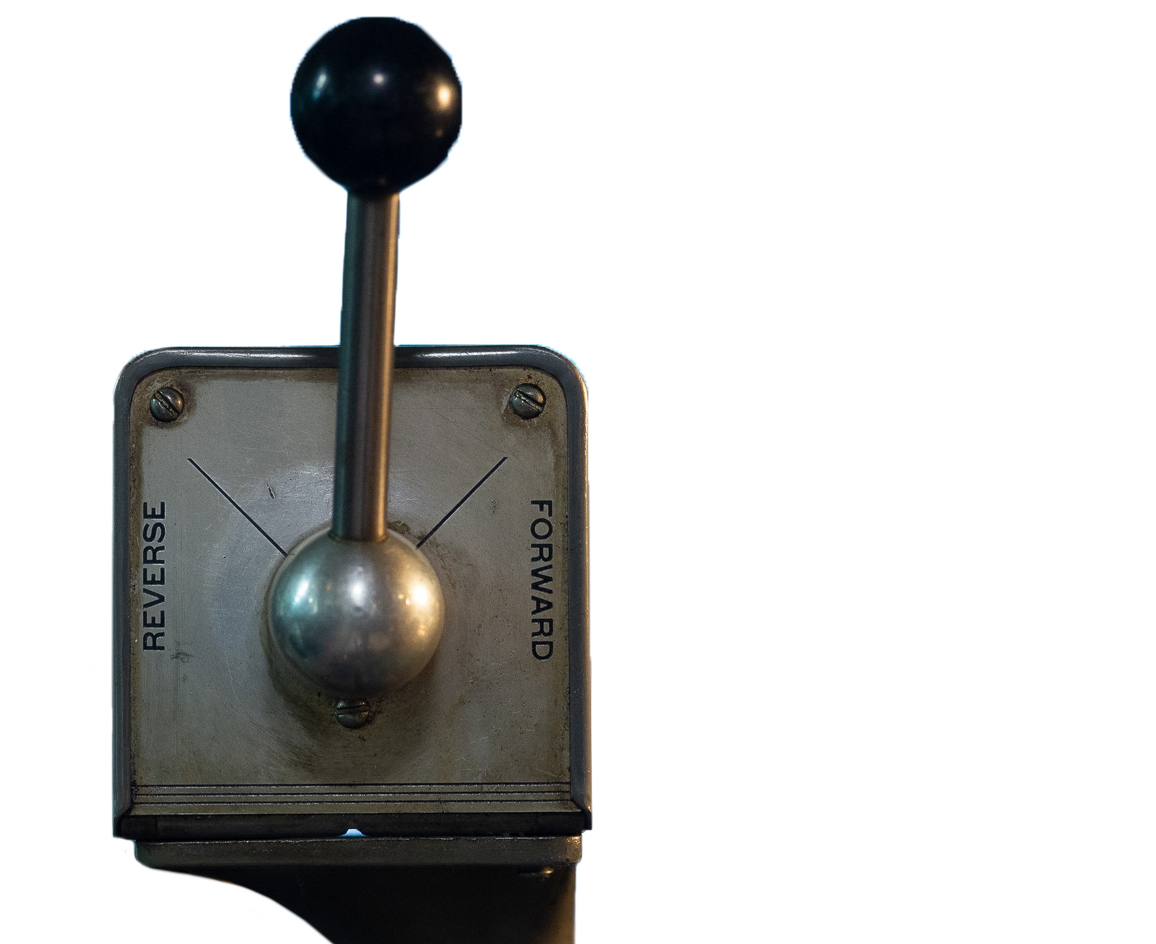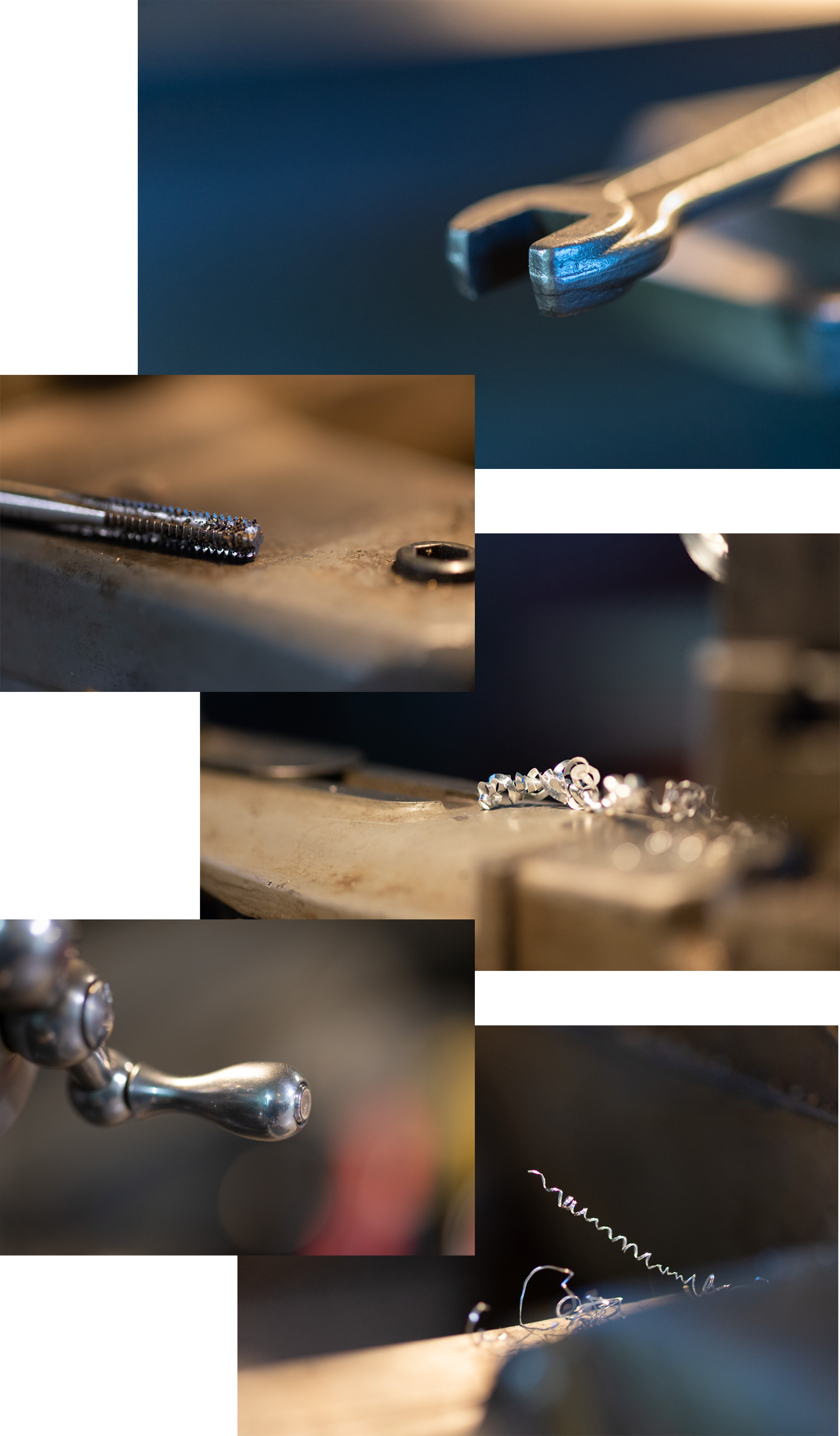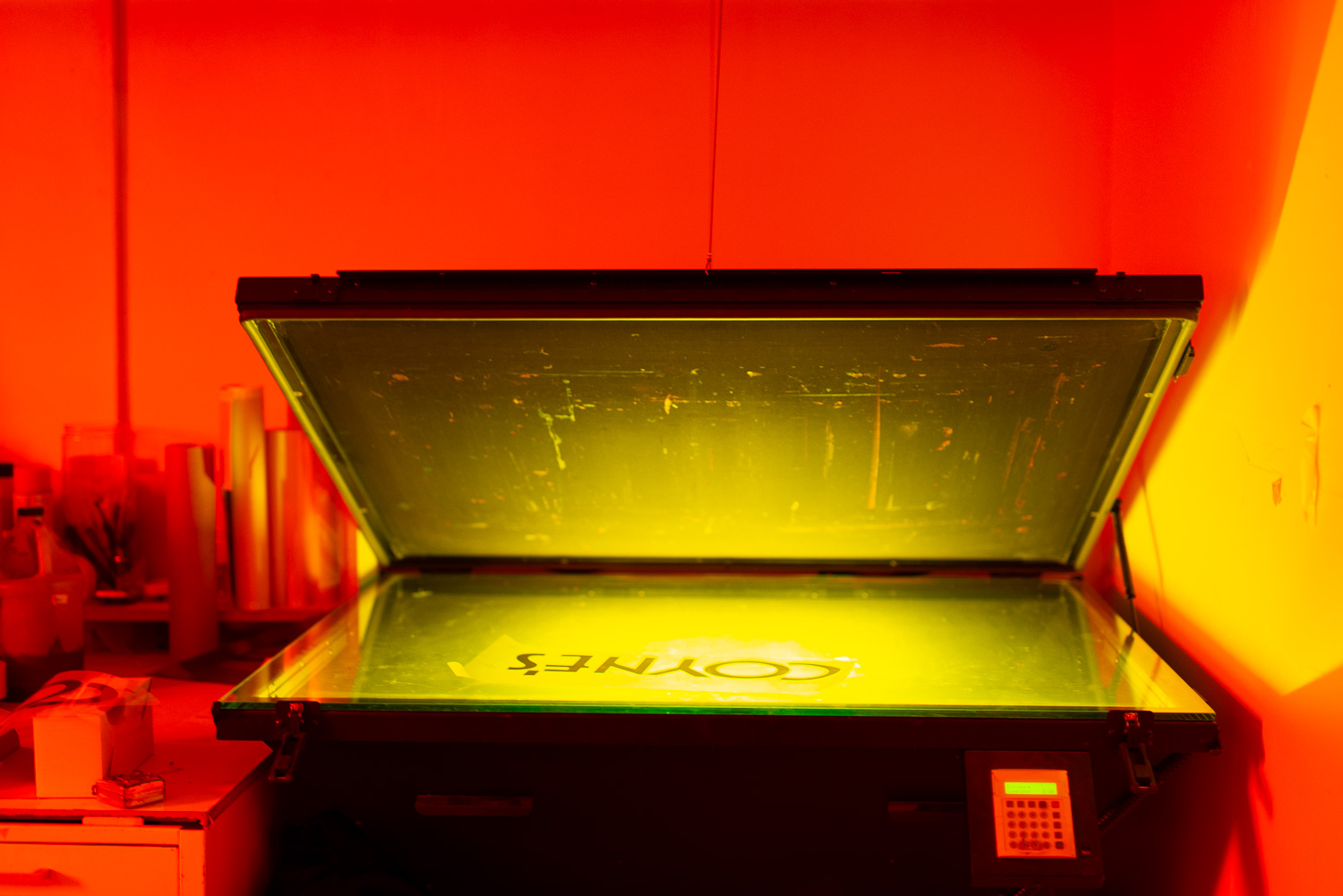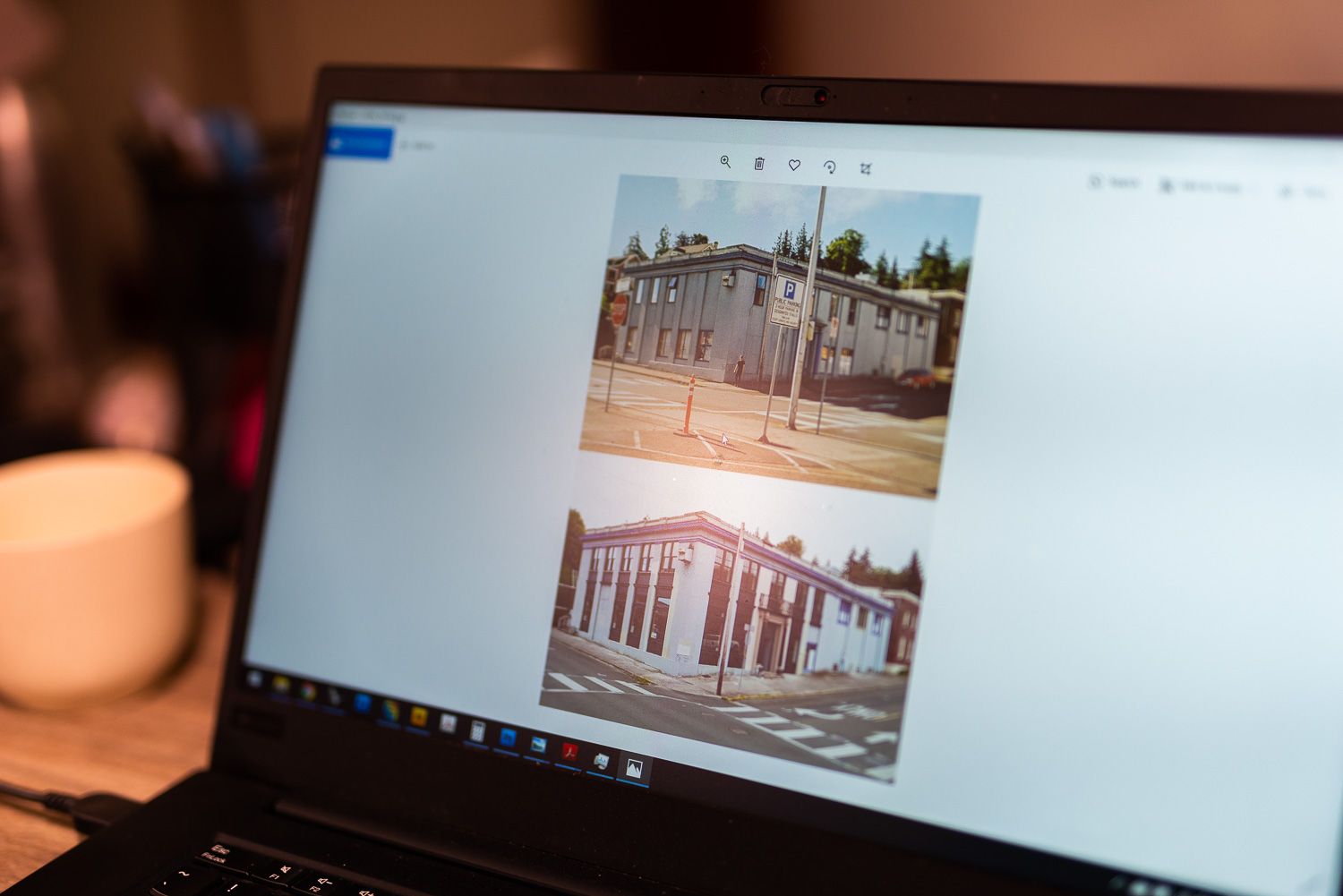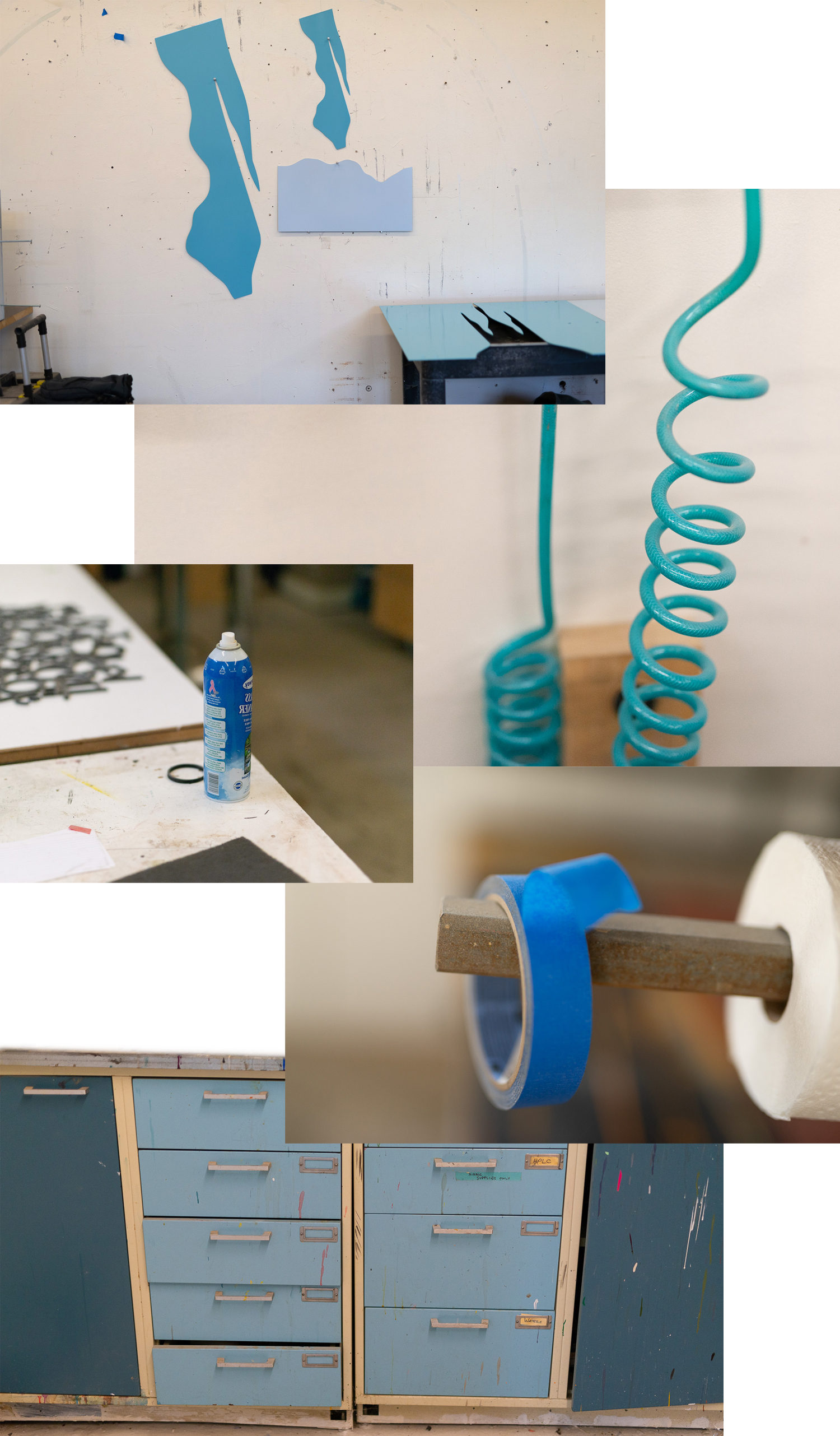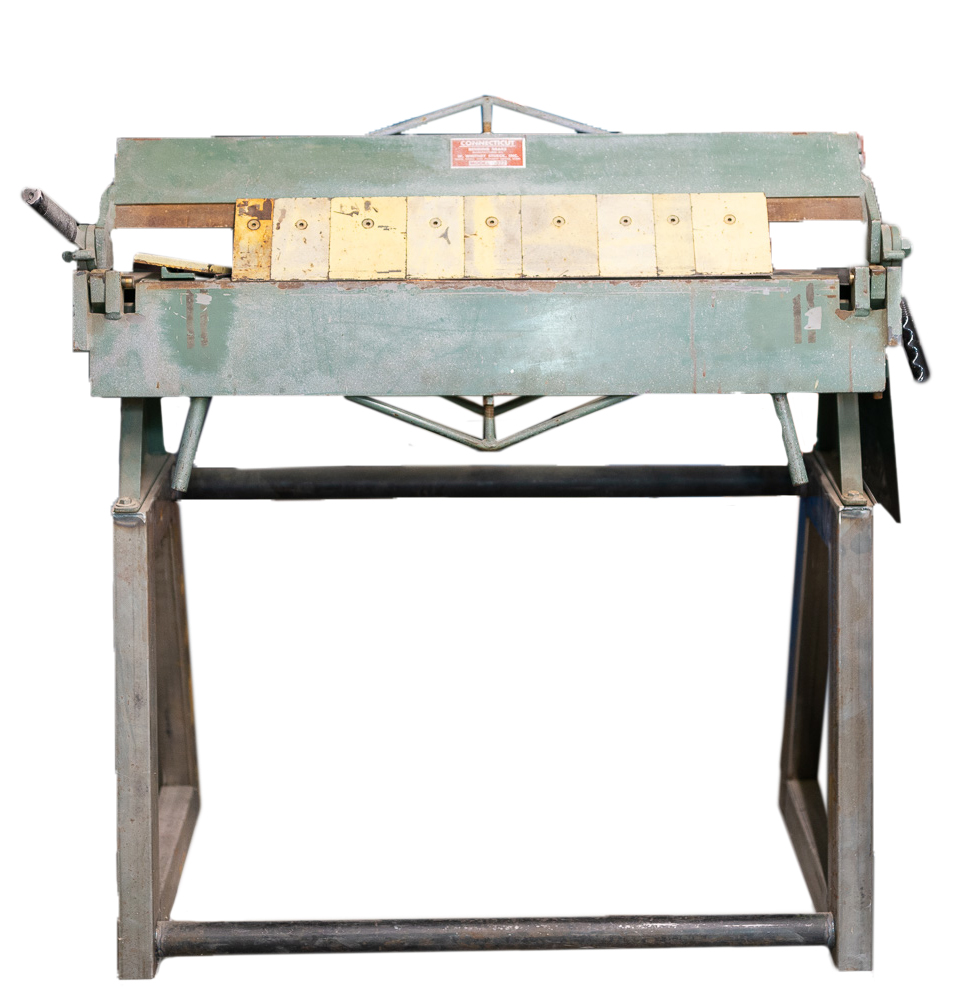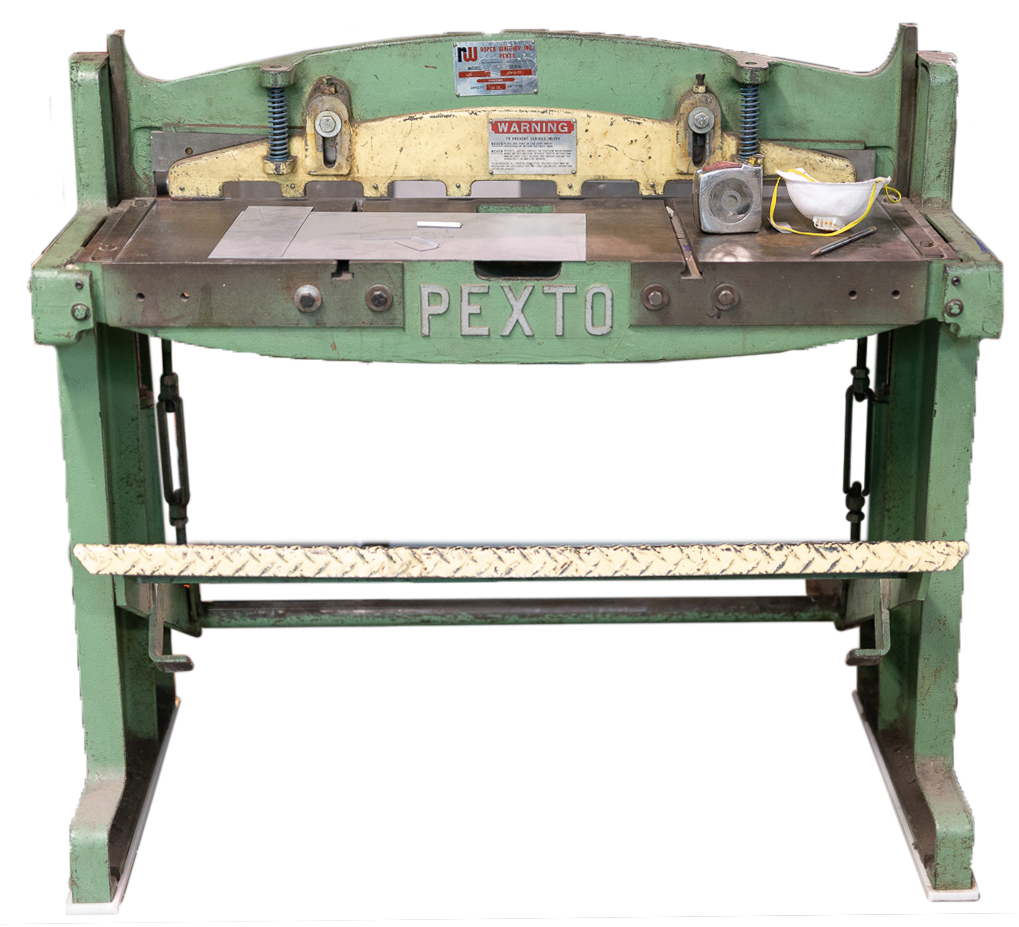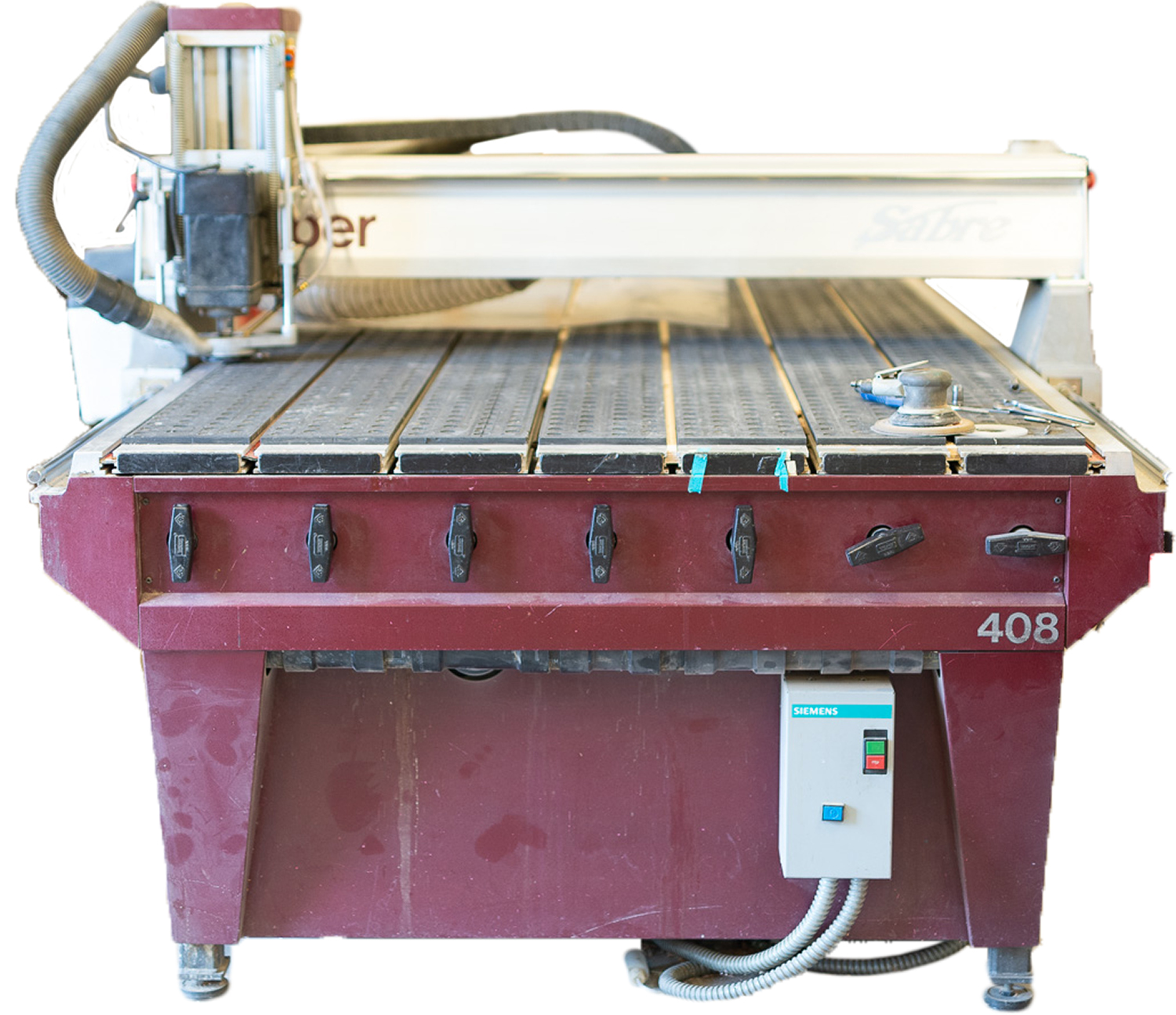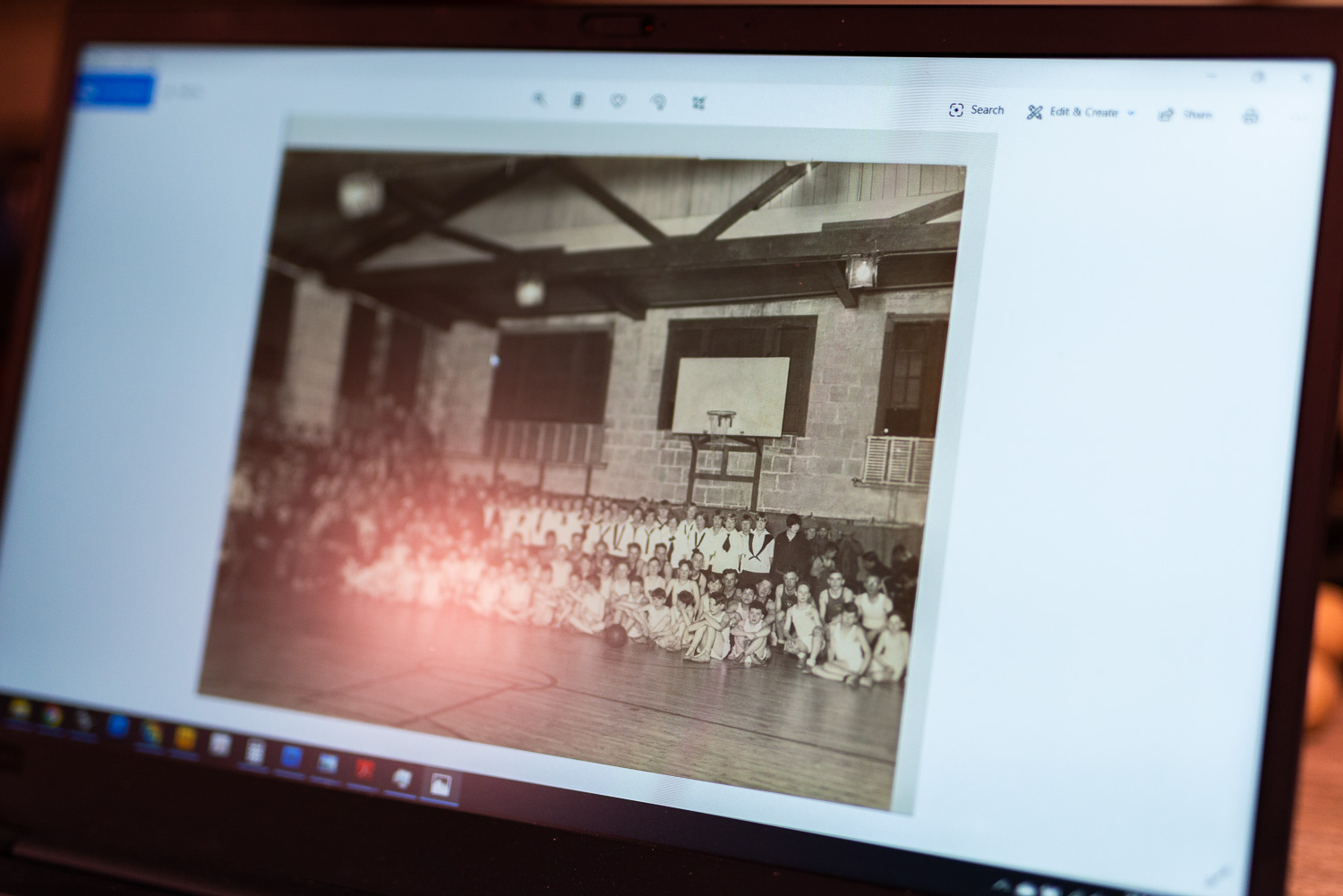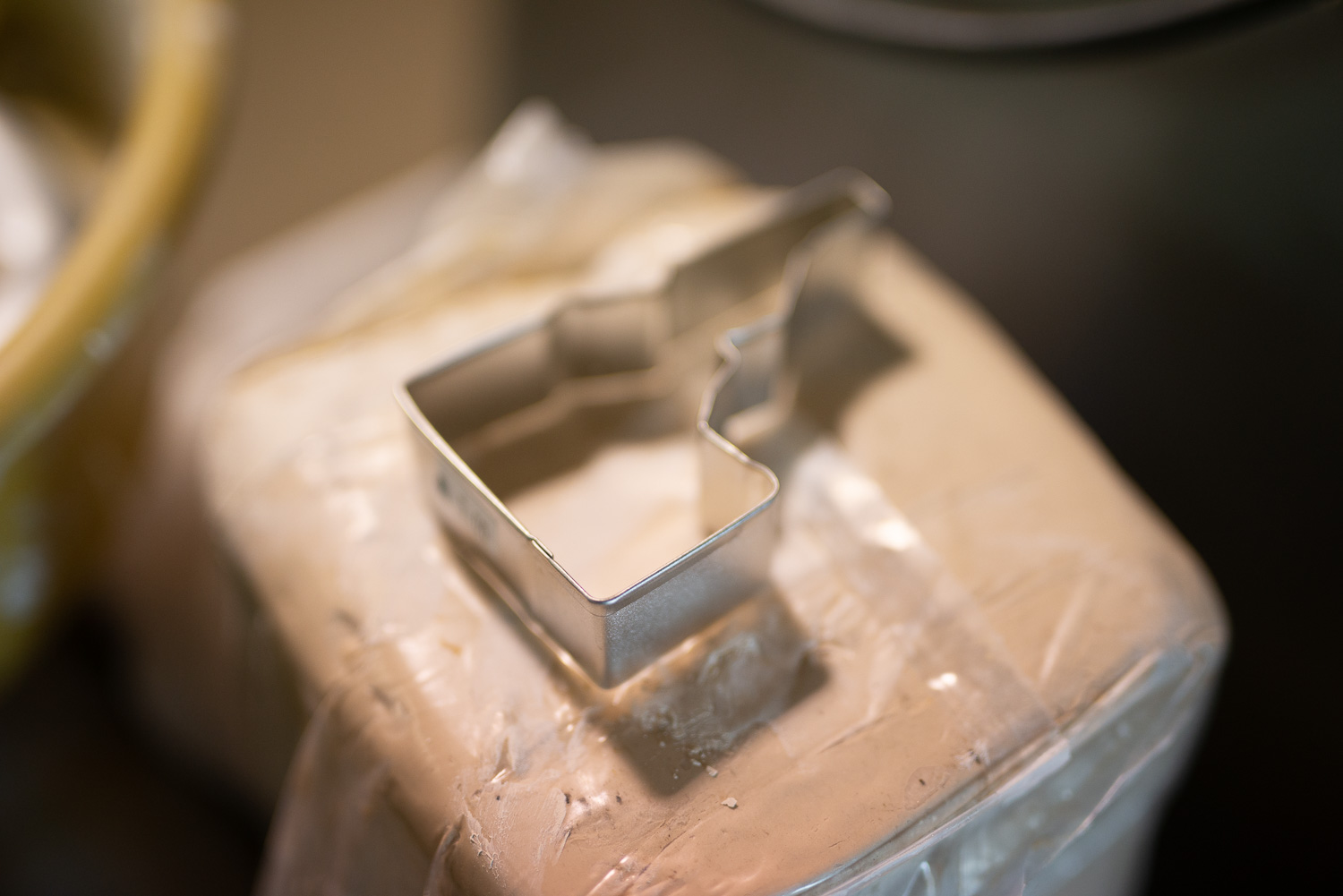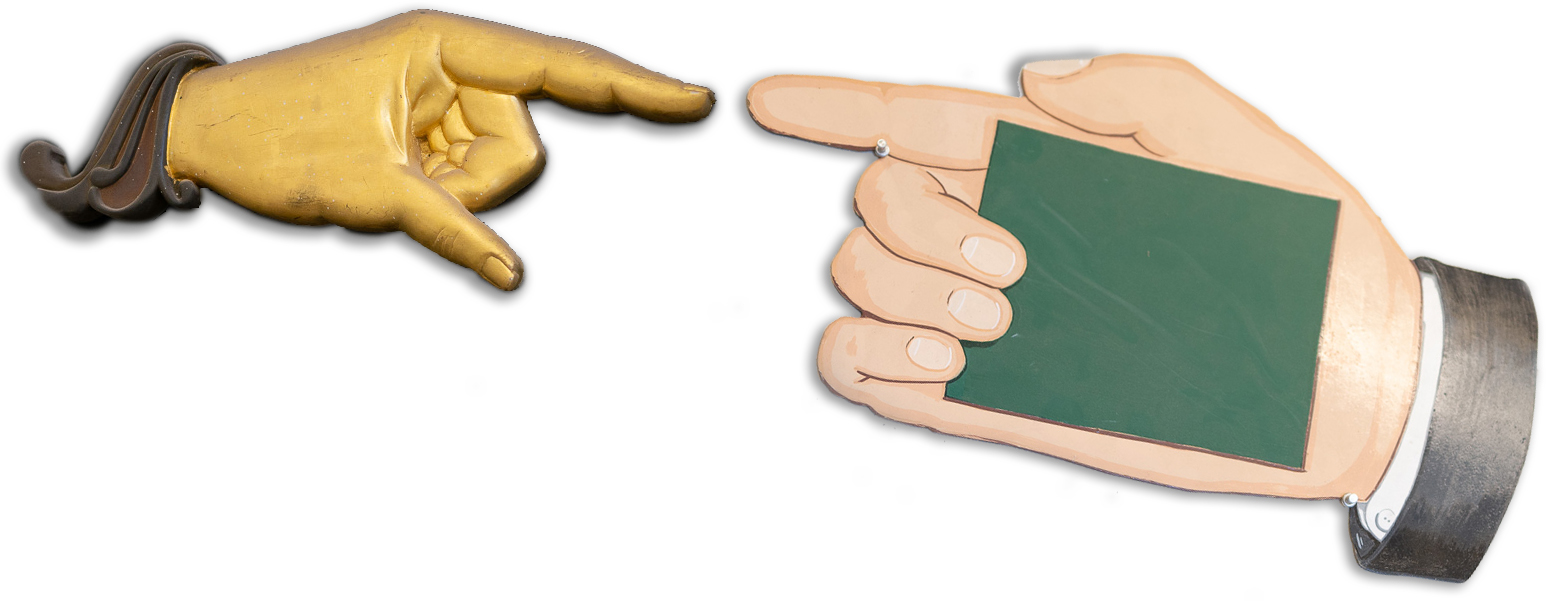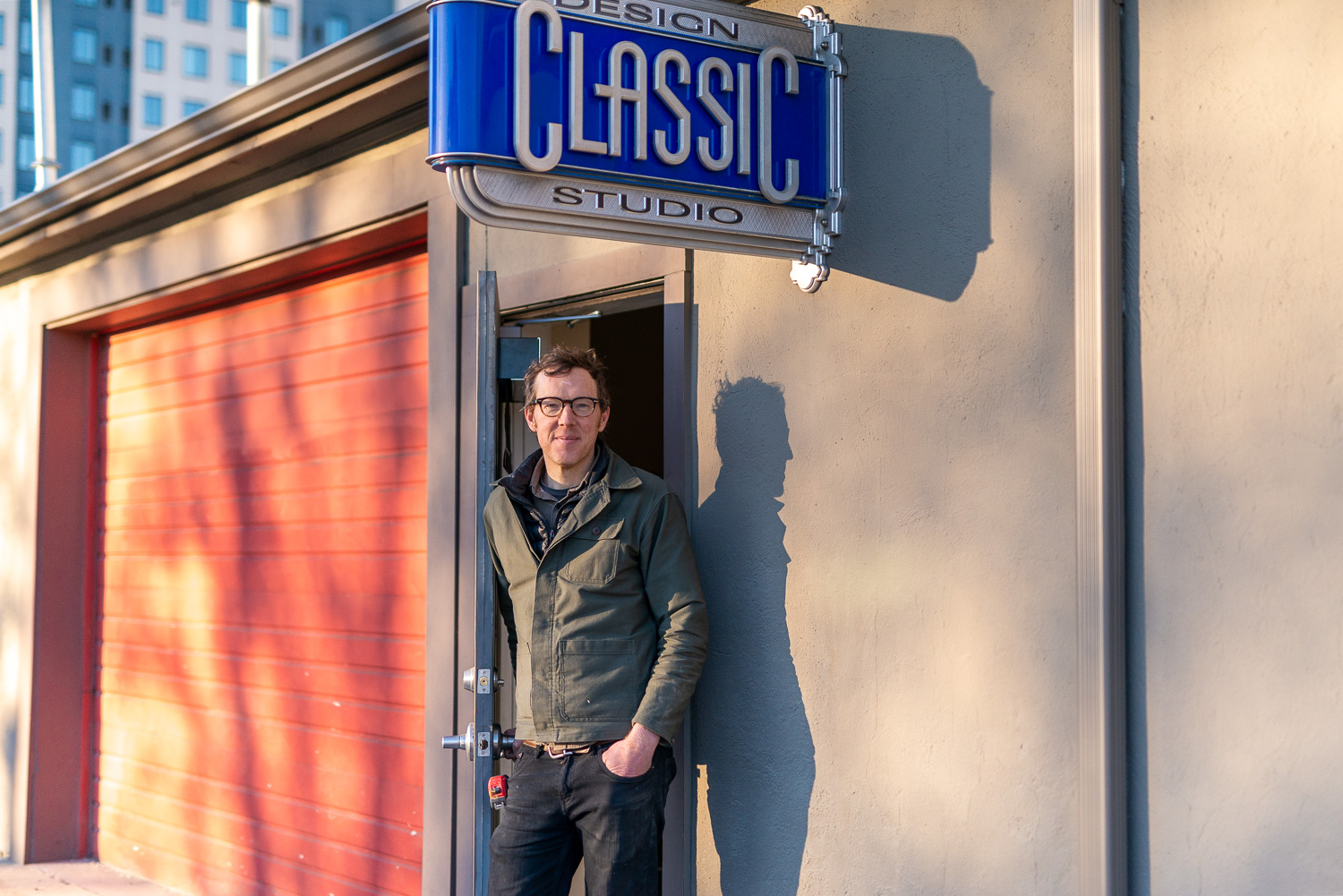Creators, Makers, & Doers: Noel Weber Jr.
Posted on 3/8/20 by Brooke Burton
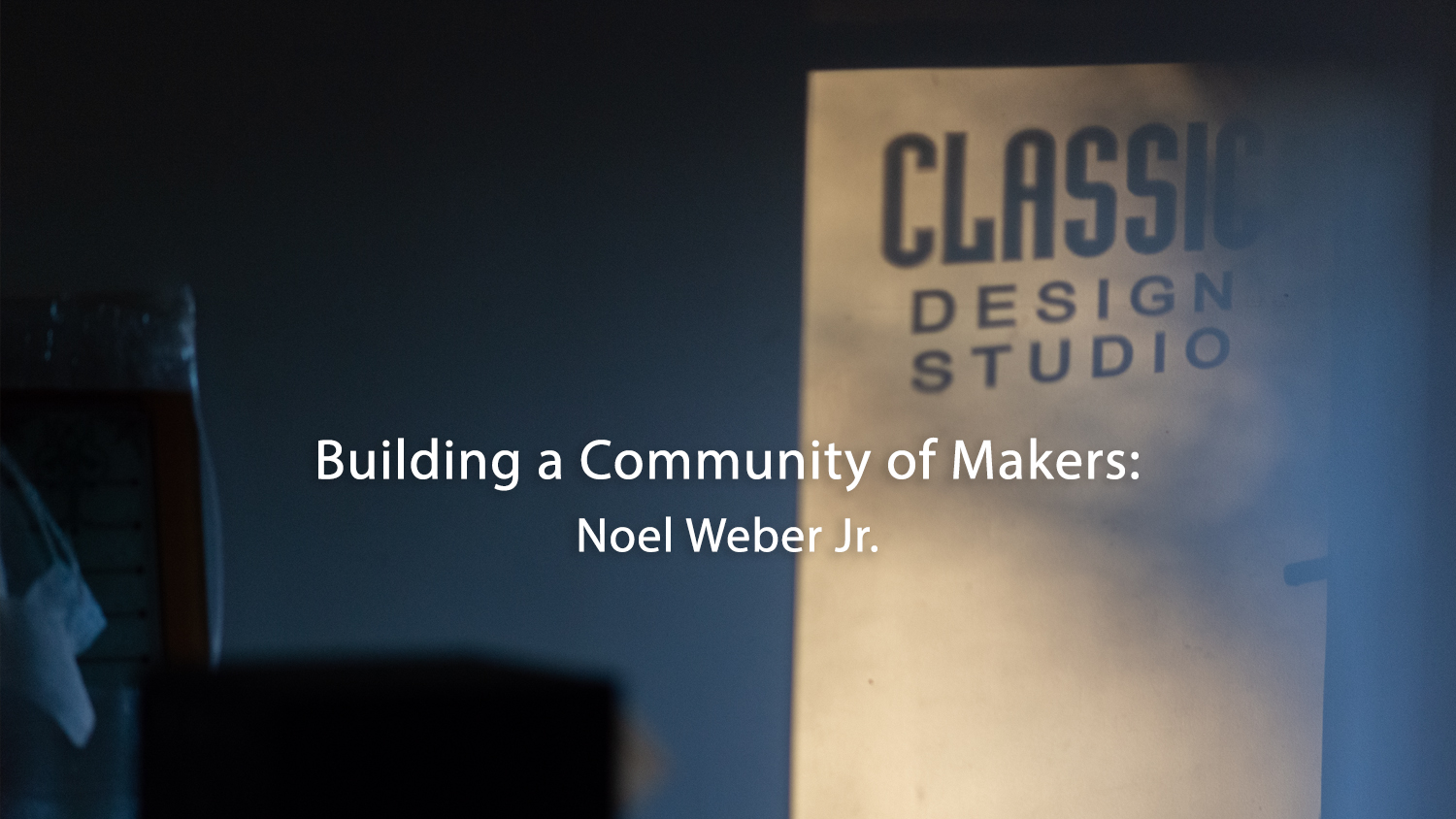 Interview & Photography by Brooke Burton ©Boise City Department of Arts & History
Interview & Photography by Brooke Burton ©Boise City Department of Arts & History
Noel Weber Jr. grew up mixing paints, glue, and plaster of Paris in his parents’ garage-turned-sign-shop, something approved of by dad, Noel Sr. and mom, Lucy. With access to supplies and encouraged to experiment, Noel and his sisters developed an appreciation for materials and fabrication from a young age. Classic Design Studio on Myrtle Street is a staple of the Boise sign industry, adding character and complexity to the built environment through traditional techniques and thoughtful design. Noel identifies with each aspect of what it means to be a creator, maker, and doer; he likes to think, to tinker, and to work alongside creative peers. One of his favorite projects? Manufacturing and installing signs in Disney California Adventure Park. His newest project? A 12 thousand square foot restoration project in Astoria, Oregon, where locals watch with curiosity as, together with friends and family, Noel returns the building to its original design. How does if feel to be hammering away at nails with your buddies as the structure takes shape? Like summer camp all over again: hanging with people you thoroughly enjoy and creating something fantastic together. You can bet it’s the community of makers, not the new floorboards, that makes Noel the most proud. Us, too, Noel!
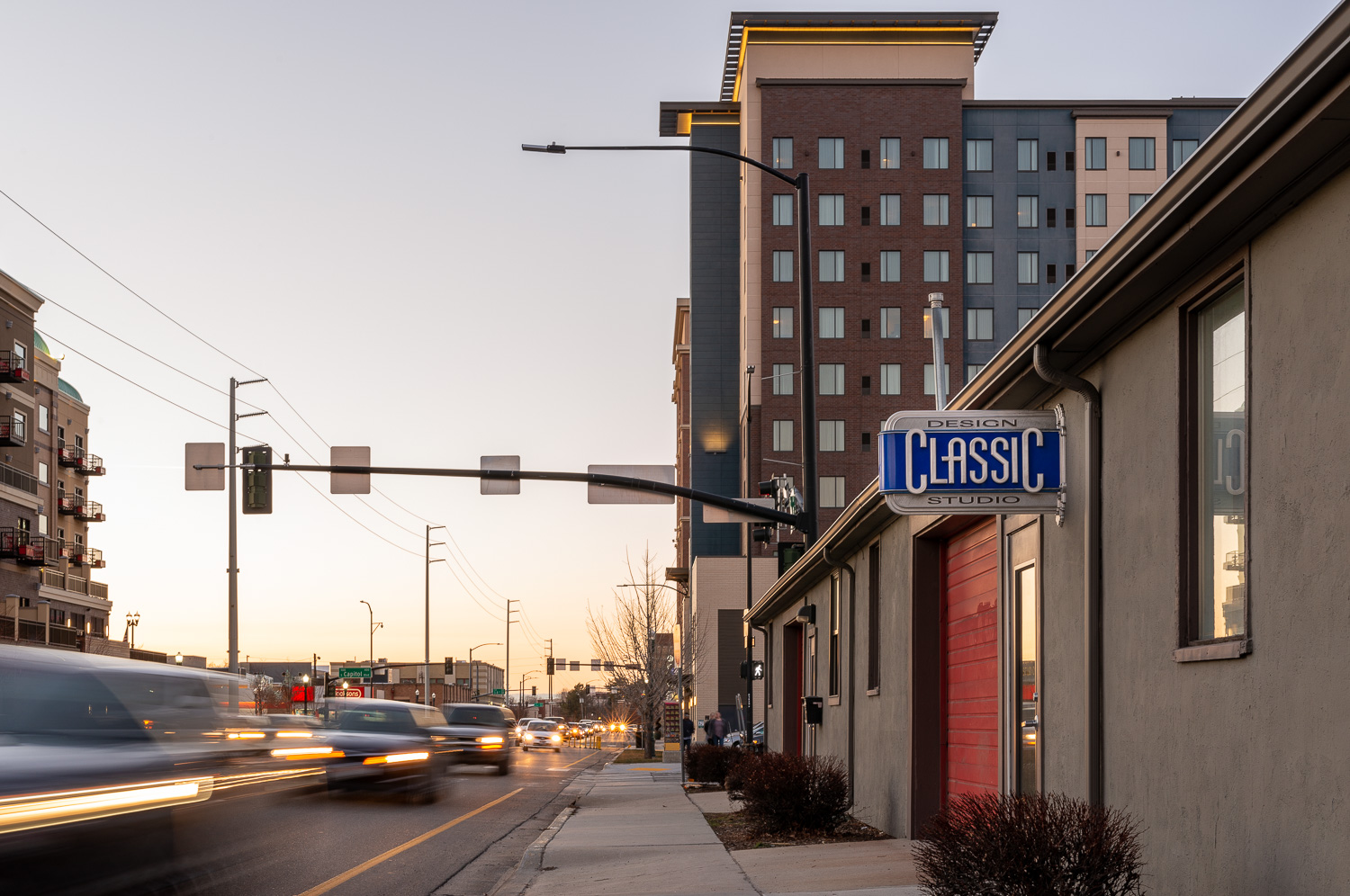 Are you here at the shop everyday?
Are you here at the shop everyday?
If I’m in town, I come in seven days a week, yeah.
And if you’re not in town, where are you?
If I’m not here in Boise, I am usually working over in Astoria, Oregon, where we have a sister shop. Kind of literally. My sister, Anna Weber, lives there, and has the Astoria Design Studio. It’s a similar setup minus some of the tooling. But I also have a restoration project on an old building going on there too.
We’re definitely going to talk about that. But we should probably set the stage for people who aren’t familiar with the Classic Design Studio—what’s the family business?
We are a sign, design, and fabrication shop. We’ve had the opportunity to make signs for a lot of people around Boise since 1979. We’ve branched out to do other projects like lighting design and build-outs for interiors as well.
What are some recent projects?
A recent three‑dimensional sign would be for a business called Re‑POP, downtown Boise.
Yes I’ve seen it! On 8th street. Very pop art.
It’s a big arrow. Arrows are always fun to do. We did the signage for Certified Kitchen + Bakery in Hyde Park. That’s a very traditional gold leaf on glass sign.
What has been a favorite job?
We did storefront signs for Disney in California a few years back. There were about 70 panels of glass in here, each with a different design and a different process. That was a really exciting job.
Have you seen them installed?
We installed them. It was pretty wild working at Disney. [Chuckles] We always had to wear hardhats and orange vests, but we would sneak into the park through a side door—we were instructed to carry our hardhats with our vests inside so we wouldn’t look like construction workers. We got to eat at the Disney cafeteria. We were allowed to go on any of the rides, but the lines were always just a little too long, so . . . But a fun, fun project.
Where can I see your signs next time I go to Disney California Adventure?
I think it’s called the Buena Vista Street.
Do you collect anything?
Collect anything? A collection of tools.
Yeah, that doesn’t count
No. No, I don’t collect anything.
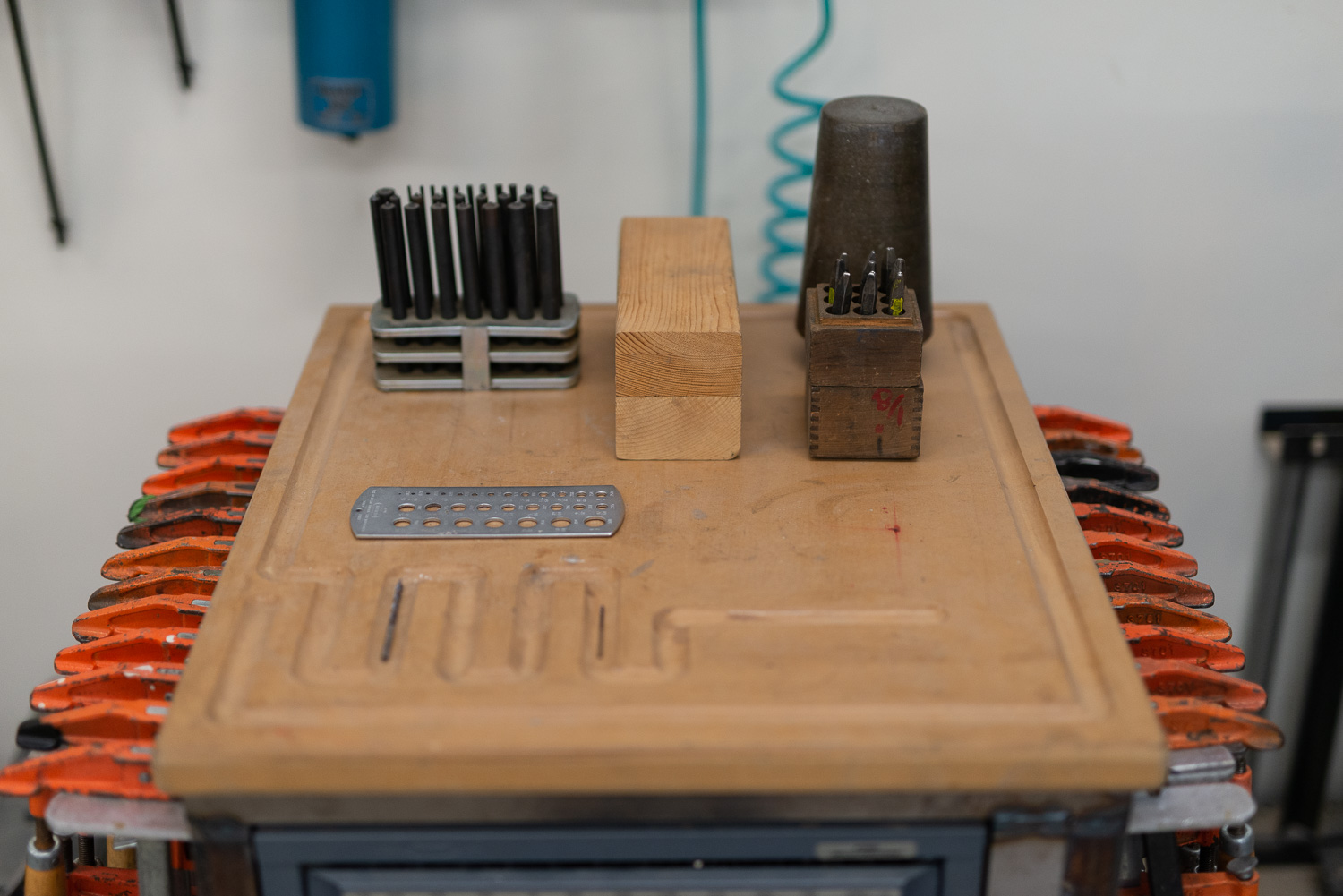 What’s your favorite color?
What’s your favorite color?
When I was a kid I said yellow because that was the color of our house.
Aw.
But yellow is really not my favorite color. I don’t know. I think it’s about context, like [in relation to] which color it’s next to, really.
I’ve never had anyone answer that question that way.
I feet pretty solid in that answer.
How would you differentiate your design shop from another sign‑making company?
Growing up in the sign industry, I have followed [the changes] quite a bit. In the 80s, when vinyl‑cutting machines first came out, it was a pretty precipitous decline in any design skills required to [enter] the industry. People could just typeset stuff, cut it out, and put it on a window. The software has gotten better over the years, and the materials more vibrant, but people’s design sense has not necessarily improved with that.
I’m laughing, but you’re not. It reminds me of how technology in photography has become more accessible, but it doesn’t mean the photographs get better across the board.
It’s kind of troubling and a bummer. There are a lot of parallels you can draw in other fields. But in the sign industry now, any person can start producing and throw stuff up on a window, but not necessarily with a relationship to the place it identifies. Because they are doing it from a computer inside their shop.
They don’t visit the site, maybe?
Yes. The beginning of our process is usually a pencil sketch. We don’t do vinyl signs. We don’t do digital printouts. We employ traditional sign‑making techniques.
What are those?
Gold leaf on glass is probably the single most important one. If you look at historic photos of downtown Boise, a lot of the storefronts would have had gold leaf on glass. It’s literally gold on glass. You apply a very, very thin sheet of gold, using a gelatin glue, then back it up with paint. It’s eye‑catching and fun.
Does that mean you spend a lot of time hand painting things?
We screen print a lot of it, too. We refine our design on the computer and screen printing allows us to tighten up the design.
Has the shop always been in this location?
No, my folks’ worked out of their garage until, I think, ’89. Then they moved to this downtown location, then expanded into this building in 2000.
Did you and your sisters help out as kids?
I spent a lot of time in that garage. My older sister was pretty busy with school. But I was digging holes in the backyard, playing in the garage, like a young kid does. When the shop moved, I worked down here, as well as both my sisters
Anna has the sign shop in Astoria?
Yes, Astoria Design Studios. Anna is a very talented painter and great with window signage. She’s designed and completed some really cool projects in Astoria.
When you were digging in the backyard, did you ever get into trouble? Maybe getting into the paint or equipment?
I have specific memories of taking different paints and glues and mixing them all together just to see what would happen, experimenting. I would kind of do it in the back hallway, like, I felt I was doing something wrong, or, I didn’t know if I should be doing it. So it was always a little hidden thing, but all innocent fun, trying to figure out materials.
You never got into trouble with the power tools?
I’m lucky I have all my digits. I’ve never hurt myself on a power tool.
My grandpa had a thing for losing digits to power tools.
I was really fortunate to have parents that, when they saw me engaged, they would try to enhance that [engagement]; to further it, you know. If I was playing with plaster of Paris, then the following week I would find, like, 50 pounds of plaster of Paris—
Aw. Ready and waiting for your experiments?
Yeah, very, very sweet.
That is very sweet. I need to get some plaster of Paris. My kids would love that.
It’s fun stuff. I have definitely gotten stuck in it a of couple times. You have to be careful.
What do you mean?
We do a lot of mold‑making here, but one of my first experiences with was when we, my sisters and some family friends, decided to cast our faces. I was probably 12. My dad was, like, “Let’s do that, great idea!” We built cardboard troughs and Vaseline-ed our faces up really good and put straws up our noses.
How could this possibly go wrong?
[Laughter] We sat in the back of the pickup truck with plastic laid down— I was excited, so I went first; poured plaster all over my face.
It hardens up pretty quickly, if I remember correctly.
No matter how much Vaseline we put on our hair, the plaster still got worked into it. It really caught on the top half of my head. When it came time to take it off— my voice was muffled by plaster, so it was hard for people on the outside to understand that it wasn’t going to come off easily.
Did you lose any skin in that process, or some hair?
No. We got everything off safely. Just, the overall experience was a little traumatic, for a moment. We have videotapes of all this, which is great. Eventually we got it off with a hacksaw and some pliers.
Here come the tools.
[Laughter] Yeah, but from there I really dove into mold‑making and casting. It was maybe a failure [at times], but it was also a great education.
You started by literally diving in. Do you consider yourself a creator, a maker, or a doer?
Man, I—how do you categorize that?
We should ask the Department of Arts & History.* I can come up with my own definition: a creator probably works out ideas in their mind first. A maker probably gets invested in materials first. And a doer probably works out ideas through process and collaboration. That’s off the top of my head.
Oftentimes I start with materials. So, probably a maker.
*Developed in the spirit of the Boise City Department of Arts & History’s mission, the Creators, Makers, & Doers series is motivated to explore the lives and processes of the creative community and ignite conversation around all the great work happening Boise. Creator: a person or organization that brings something to life. Maker: a person or organization that makes or produces something. Doer: a person or organization that acts, produces, or performs something.
But the culmination of all three approaches is still creation, right?
There’s definitely overlap in all three facets. But I think probably maker, by your definition. But when you first asked the question, I was thinking, I feel like I’m all three of those things.
For sure! I think you are all three. Maybe it’s like a three weighted scale, and one has more gravity, or pull, than the other two.
Yeah. But I didn’t want to sound pretentious.
[Laughter] Nobody’s ever said that before. Just kidding, that comes up all the time in interviews, people don’t want to toot their own horn. I guess that’s why I’m here, so … [laughter] You really caught my interest talking about traditional design, that an increase in technology does not parallel an increase of design sensibility .
It’s an inverse relationship, I think.
Technology is easily accessible, but design knowledge and skills still take time and work to achieve?
Yes, I think it parallels architecture too. The way people build nowadays is very different from how they used to. The design you see in architecture is different, but not better, by any means. It’s kind of codified, really funneled down to the basic necessities.
Are we talking about residential structures or—
Residential or commercial. In the residential market, it always bums me out when someone has a plastic door that is meant to look like wood, or a plastic floor meant to look like wood. Taking the material and trying to make it look like something it’s not. It seems weird that we can’t celebrate those materials for what they are and not try to make them look like something they aren’t.
Celebrate the plastic door as a plastic door?
Basically, if that would be your choice of materials.
Sometimes the choice of materials is driven by cost. IKEA celebrates plastic. They design around the texture of plastics and the huge variety of color they have to offer. Let’s talk about Astoria, you’re big news over there! What is the building you purchased?
We picked up an old YMCA.
So it’s big?
It’s about 12,000 square feet.
That is a lot of space. A LOT of space.
It was built in 1914. Previously owned by James Russell, who was a sculptor and instructor at Boise State. He worked with Cheryl Shurtleff and Richard Young years ago.
That’s some studio! It’s what artists’ dreams are made of.
Yeah, but the building was also in disrepair. It functioned as a YMCA until the 70s or 80s. It was a private school for a little while. After Jim Russell, I bought it about four and a half years ago. I have been working on a big restoration of the facade, replacing a lot of the architectural details that were dismantled over the years.
You are taking it back to the original design?
Yeah, we found old blueprints.
I bet the city of Astoria loves you! Where did you find the old blueprints?
They were in the building, underneath some stuff. I’ve been able to employ a lot of skills I’ve developed here in the shop. The architectural details between the first‑ and second‑story windows were originally made of wood and had probably rotted, then removed. From the scraps we found, photos, and the architectural plans we were able to make a polyurethane mold, spray in an acrylic‑modified fiber‑reinforced concrete, then hang the [new details] on the building.
Wow. So you re-created the original facade design, using a mold instead of carved wood.
I probably spent a year just going over the plans; figuring out how to separate all the spaces, figure out the egresses, the design.
What propelled you to buy it?
We needed a place to work. And it seemed like a fun project.
Were you already watching the market, shopping for real estate?
No, actually we weren’t looking for anything. We were thinking about the idea, but only vaguely. Then a friend of ours said “Check this building out; it’s for sale. It’s kind of interesting.” We walked through and it was kind of a moldy mess. It didn’t really make much sense. It had been on the market for three or four years. No one wanted it, so we made him an offer, and he accepted. That was the beginning.
Did you make a list of pros and cons before you made the offer?
You know, I think when you approach something like this, it’s hard to make a list of cons because of the excitement in starting a new project.
So you didn’t make a list, because the feeling of excitement made the cons irrelevant [laughter]. I’ve done that before.
Despite it being a much larger project than I anticipated—
Oh, really? A real estate venture turned into a bigger project than anticipated? [Laughter]
I had a timeline of two years, to finish up the spaces. We’re almost five years in now and just getting to those spaces. We’re about two and a half years behind schedule.
Story of my life.
On the other hand, it’s been a project that’s engaged a lot of friends and family. Working on it with all these people has been super fun. Even though it’s not a YMCA anymore, going into the building makes you feel like you’re at summer camp somehow. Even though you’re sweeping the floor or, hammering nails, it feels like vacation.
I just realized this is a big tree fort.
A big tree fort?
Yeah. It’s a clubhouse for adults.
Pretty much. It’s a fun place to hang out. It’s a very expensive fort. I’m happy to say we’ve rounded a corner and leased out some spaces, so it’s not all money going out the window.
That’s a good feeling. Is there a pool?
Yes, there is a pool in the basement, it’s covered up by a floor. And I will not be fixing the pool.
Noted. How are you dividing the building up?
We split the space into about five different areas. We have a couple of commercial spaces leased out on the ground floor: a sewing shop, folks who make wax bags and clothing; very creative individuals. Really happy to have them. The other is a couple of folks who make really beautiful cakes and pastries. We will have a little mercantile, a little grocery store there. That’s two sections in the ground floor. The top floor is residential, so we built bathrooms and bedrooms. Then there’s the gym. It was an old basketball court—which, basketball was invented at the YMCA, did you know that?
I did not. You must be delving into the history of the YMCA.
I am. We are saving the gym for our studio space and will probably split off some other studio space too, kind of like what we have going on here.
That is so perfect! Astoria Design Studio is set up?
Yep. We have production, a darkroom, screen printing, and some basic tools.
It’s a long drive from here, though.
You know, to able to beat the summer heat of Boise, Idaho, and work in both locations is kind of the end goal. Also, the idea of curating a group of creative people to share the facility, each working in different materials, is appealing.
It’s stimulating to be around other artists, and the creativity that overlaps.
It definitely overlaps. Wil Kirkman of Rocket Neon has been working out of the Classic Design Studio here for 15 or 20 years. While we don’t necessarily work on projects together, it’s really nice just to bounce ideas off of someone, or just have other creative people in the space to chat with or say hello.
Just watching someone work can be very informative and inspiring.
I think it makes you work a little harder when other people are around you working. It’s nice to have that camaraderie.
A witness to my work ethic, that’s what I need! [Laughter]
Here in the shop we have Lauren Mahon, building assemblies for the Discovery Center of Idaho. She works out of the wood shop in the evenings. Steam‑bending wood and making fun things. You know Amy Nack and Wingtip Press, of course.
Yes! We interviewed Amy.
MING Studios, we work with them a lot.
I can imagine there might be struggles with a family business, to be around each other day in and day out?
You know, you hang out with anyone long enough, you are bound to rub each other the wrong way sometimes, but overall, the working relationship I have with my mom and dad and sister has been really positive.
What’s your favorite thing about having grown up in a family of makers and creators?
The sense of community you get by working together—we have barbecues down here in the summer, it’s really special. And it’s not just family, we are friends with a lot of tradespeople. The community of makers is really what I enjoy about this space.
Have you ever lost something that you wish you could find again?
I think—a feeling of leisure. I often wish that I could feel like I did in high school again, or right after graduation during the summer. I had nothing to do and no worries, just swimming in the Boise River and listening to music all day. With everything I’ve got going on I’ve feel I’ve lost that. But, losing something, as far as an inanimate object?
No. No, your answer is way better. What are you proud of?
I’m proud of my folks and my sister and the people I’ve been able to call friends. And I’m definitely proud to be able to work here in Boise in the shop and produce work for people that they smile about.
Downtown Boise
March 12, 2020
This interview has been edited and condensed for clarity.
Creators, Makers, & Doers highlights the lives and work of Boise artists and creative individuals. Selected profiles focus on individuals whose work has been supported by the Boise City Dept. of Arts & History.
